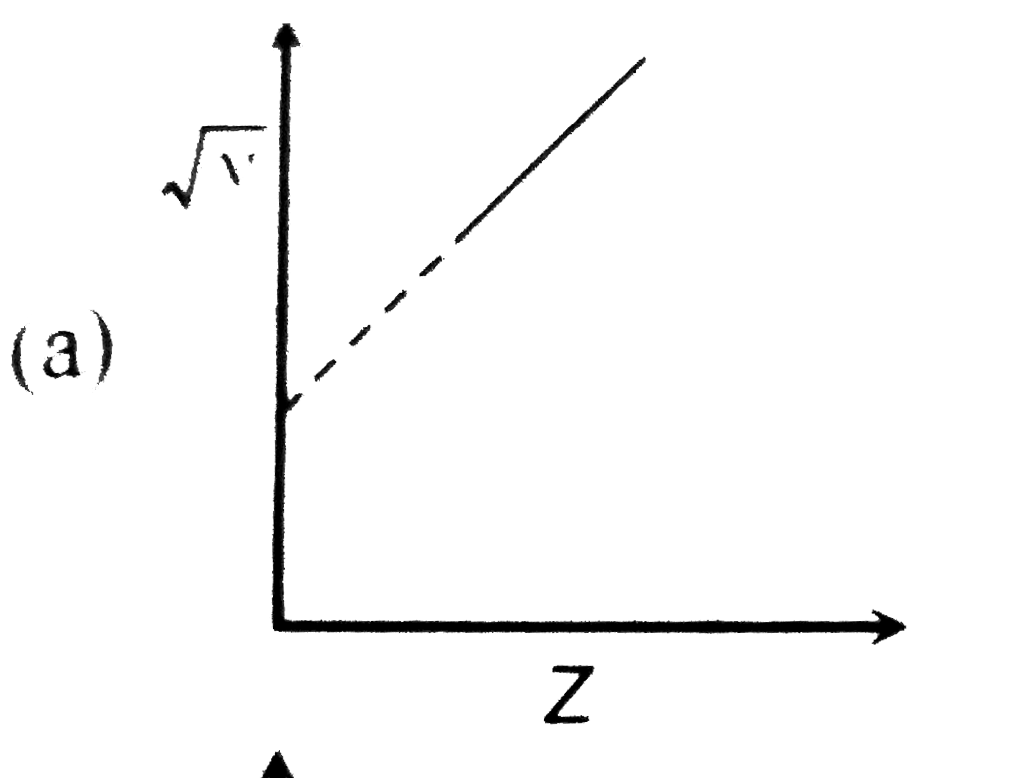When high energetic electron beam , (i.e., cathode rays) strike the heavier metal, then X-ray are produced. Spectrum of X-ray are classified into two categories: (i) continous spectrum, and (ii) characteristic depends only on the potential difference across the electrode. But wavelength of characteristic spectrum depends on the atomic number (z).
The production of continuous X-ray is due to the
acceleration of incident electrons by the the nucleus of the target atom
electron transition between inner shells of the target atom
electron transition between outer shells of the target atom
annibilation of the mass of incident electrons
The correct Answer is:A
When the accelerated electron beam strickes the nucleus of target atom, continuous X-ray are produced.
Topper's Solved these Questions
- ATOMIC PHYSICSBOOK - CENGAGE PHYSICSCHAPTER - ATOMIC PHYSICSEXERCISE - Integer
4 Videos
- ATOMIC PHYSICSBOOK - CENGAGE PHYSICSCHAPTER - ATOMIC PHYSICSEXERCISE - Fill In The Blanks
8 Videos
- ATOMIC PHYSICSBOOK - CENGAGE PHYSICSCHAPTER - ATOMIC PHYSICSEXERCISE - Multiple Correct
13 Videos
- ALTERNATING CURRENTBOOK - CENGAGE PHYSICSCHAPTER - ALTERNATING CURRENTEXERCISE - QUESTION BANK
65 Videos
- ATOMSBOOK - CENGAGE PHYSICSCHAPTER - ATOMSEXERCISE - QUESTION BANK
40 Videos
Similar Questions
Knowledge Check
When high energetic electron beam , (i.e., cathode rays) strike the heavier metal, then X-ray are produced. Spectrum of X-ray are classified into two categories: (i) continous spectrum, and (ii) characteristic depends only on the potential difference across the electrode. But wavelength of characteristic spectrum depends on the atomic number (z).
The production of characteristic X-ray is due to theAcontinuous acceleration of incident electrons towards the nucleusBcontinuous ratardation of incident electrons towards the nucleusCelectron transition between inner shells of the target atomDelectron transition between outer shells of the target atomIn X-ray spectrum wavelength λ of line Kα depends on atomic number Z as
Aλ∝Z2Bλ∝(Z−1)2Cλ∝1(Z−1)Dλ∝1(Z−1)2The graph between the square root of the frequency of a specific line of characteristic spectrum of X - rays and the atomic number of the target will be
A B
B C
C D
D
From what meterial is the anod of an X-ray tube made if the Kα line wavelength of thej characteristic spectrum is 0.76Å?
View SolutionThe characteristic X-rays spectrum is emitted due to transition of
View SolutionThe characteristic X-rays spectrum is emitted due to transition of
View SolutionWhen light of sufficiently high frequency is incident on a metallic surface, electrons are emitted from the metallic surface. This phenomenon is called photoelectric emission. Kinetic energy of the emitted photoelectrons depends on the wavelength of incident light and is independent of the intensity of light. Number of emitted photoelectrons depends on intensity. (hv−ϕ) is the maximum kinetic energy of emitted photoelectron (where ϕ is the work function of metallic surface). Reverse effect of photo emission produces X-ray. X-ray is not deflected by electric and magnetic fields. Wavelength of a continuous X-ray depends on potential difference across the tuve. Wavelength of charasteristic X-ray depends on the atomic number.
Q. If potential difference across the tube is increased then
View SolutionWhen light of sufficiently high frequency is incident on a metallic surface, electrons are emitted from the metallic surface. This phenomenon is called photoelectric emission. Kinetic energy of the emitted photoelectrons depends on the wavelength of incident light and is independent of the intensity of light. Number of emitted photoelectrons depends on intensity. (hv−ϕ) is the maximum kinetic energy of emitted photoelectron (where ϕ is the work function of metallic surface). Reverse effect of photo emission produces X-ray. X-ray is not deflected by electric and magnetic fields. Wavelength of a continuous X-ray depends on potential difference across the tuve. Wavelength of charasteristic X-ray depends on the atomic number.
Q. A monochromatic light is used in a photoelectric experiment on photoelectric effect. The stopping potential
View Solution